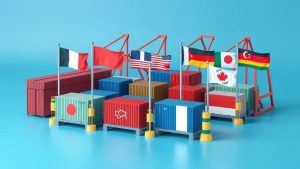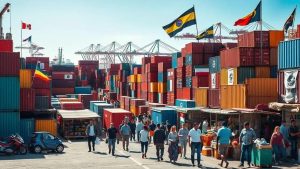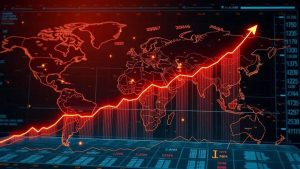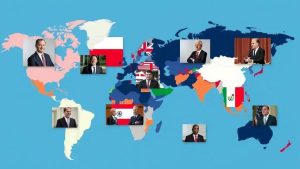Tariff-induced recession: what you need to know

A tariff-induced recession occurs when increased tariffs negatively impact economic activity, leading to decreased trade, consumer spending, and potential job losses as countries respond with retaliatory measures.
Tariff-induced recession can have profound implications for economies worldwide. As tariffs rise, many are left wondering how this economic shift impacts their daily lives and future stability. Let’s dive into the details.
Understanding tariff-induced recession
Understanding tariff-induced recession can seem complex, but it’s essential for grasping current economic challenges. When tariffs increase, they can disrupt trade, leading to a slowdown in economic growth.
To explore this concept, let’s delve into some key details.
What Happens During a Tariff-Induced Recession?
Tariffs are taxes imposed on imported goods. When these taxes rise, they can cause prices to increase on both imported and domestic products. This, in turn, discourages consumer spending and can lead to a decrease in production.
Key Impacts
- Higher prices for consumers increase overall costs.
- Businesses may face lower profits, leading to budget cuts.
- Job losses can occur as companies adjust to decreased demand.
- Global trade can suffer, causing tensions between countries.
The effects are not only immediate. Over time, tariff-induced recessions can slow down the economy significantly, often leading to increased unemployment rates and longer recovery periods.
Another important factor is how these recessions can create uncertainty in the market. When companies are unsure about future trade policies, they might hold back on investments, further stalling economic growth.
Understanding these dynamics helps us see why tariff-induced recessions are serious. They can reshape not only national economies but also global trade relationships.
Historical examples of tariff-induced recessions
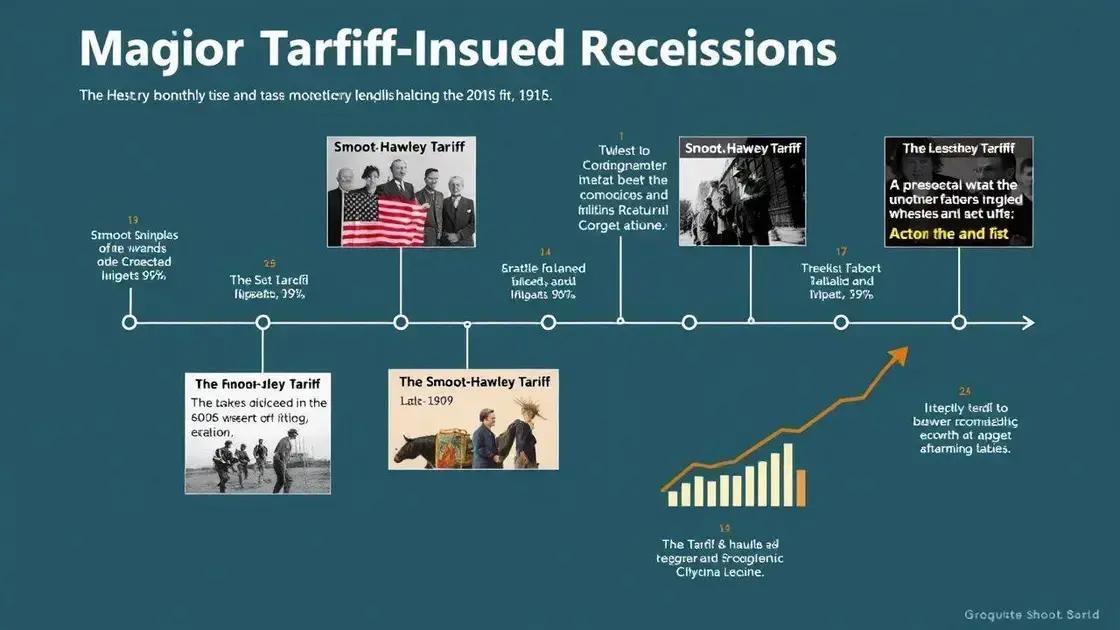
Looking at historical examples of tariff-induced recessions can provide valuable insights into their effects. These examples illustrate how tariffs can lead to economic downturns, affecting businesses and consumers alike.
One significant example is the Smoot-Hawley Tariff enacted in 1930. This tariff raised duties on many imports, leading to retaliatory tariffs from other countries. As a result, international trade plummeted, contributing to the Great Depression.
Key Historical Events
There are other notable instances as well:
- The Fordney-McCumber Tariff of 1922 raised tariffs significantly, leading to reduced trade.
- In 1980, the U.S. imposed tariffs on steel, causing a slowdown in related industries.
- In the 2000s, tariffs on imports affected the housing market and manufacturing sectors.
These events highlight how tariffs can disrupt not only domestic markets but also global economies. When countries impose tariffs, the interconnected nature of trade means that others will likely respond. This back-and-forth can escalate tensions and worsen the economic outlook.
The outcomes often include job losses, increased prices for consumers, and a general reduction in economic activity. Understanding these historical precedents helps us recognize the potential ripple effects of tariff policies today.
Economic indicators of a tariff-induced recession
Understanding the economic indicators of a tariff-induced recession is essential for identifying the potential impacts of trade policies. These indicators can reveal how tariffs affect both the economy and daily life.
Typically, several key indicators show that a recession influenced by tariffs is underway.
Key Economic Indicators
- Unemployment Rate: A rising unemployment rate often signals that businesses are cutting back on hiring due to decreased demand caused by higher prices.
- Gross Domestic Product (GDP): When tariffs lead to slower economic growth, the GDP will tend to decline, indicating overall economic slowdown.
- Consumer Spending: As prices rise, consumers may cut back on spending. This is a critical indicator since consumer spending drives a large portion of economic activity.
- Trade Balance: A worsening trade balance, where imports exceed exports, can indicate negative impacts from tariffs on trade relationships.
Monitoring these indicators helps economists and policymakers understand the broader picture. For example, a spike in unemployment might suggest that tariffs are causing significant harm to certain industries.
Another important aspect to consider is how inflation rates may increase. As production costs rise due to tariffs, businesses might pass those costs on to consumers, leading to inflation. This could further tighten consumer spending, creating a cycle that exacerbates the recession.
In conclusion, being aware of these economic indicators allows individuals and businesses to prepare for and respond to the challenges presented by a tariff-induced recession.
Strategies for individuals during economic downturns

Adapting to a tariff-induced recession can be challenging for individuals, but there are several effective strategies that can help navigate economic downturns. These strategies focus on maintaining financial stability and preparing for potential job loss.
One important step is to manage expenses carefully. Identifying unnecessary costs can free up funds for essential needs. Creating a budget allows individuals to keep track of their spending.
Important Strategies
- Build an Emergency Fund: Saving money for emergencies can provide a safety net during tough times.
- Enhance Skills: Investing in education or skill development can enhance employment opportunities, making one more appealing to employers.
- Diversify Income Streams: Finding side jobs or freelance work can supplement income and reduce reliance on a single paycheck.
- Stay Informed: Keeping up with economic news can help anticipate changes in the job market.
Another strategy involves networking. Making connections within your industry can lead to potential job opportunities. Attending workshops or industry events can help expand one’s professional network.
It’s also wise to consider downsizing or adjusting living conditions if necessary. This could involve moving to a less expensive area or finding a more affordable housing option. These changes can be difficult, but they might be essential for financial well-being.
Finally, keeping a positive mindset is crucial. Staying adaptable and open to new opportunities can make a significant difference during challenging times. Remembering that economic cycles change can help maintain hope and motivation.
Impact on global trade relations
The impact on global trade relations due to tariff-induced recessions can be profound and complex. When countries impose tariffs, they can disrupt established trade agreements and relationships, leading to a chain reaction of economic consequences.
Tariffs often lead to retaliatory measures. If one nation raises its tariffs, other nations may respond by imposing their own tariffs on imports. This back-and-forth can escalate tensions and create trade wars.
Key Effects on Trade Relations
- Increased Costs: Higher tariffs often lead to increased costs for businesses and consumers alike. This can decrease demand for imported goods.
- Trade Agreements at Risk: Existing trade agreements may become strained or obsolete as countries seek to protect their domestic industries.
- Supply Chain Disruptions: Companies that rely on international suppliers could face disruptions, leading to delays and increased prices.
- Market Uncertainty: Uncertainty around tariffs can make businesses hesitant to invest, affecting global economic growth.
Countries participating in trade may find their markets less accessible. The overall atmosphere of cooperation can be undermined, making it challenging to reach mutually beneficial agreements.
Furthermore, smaller economies may suffer more than larger ones during these times. They often depend heavily on trade and may lack the resources to adapt to sudden changes in tariff policies. This can create economic instability within these nations.
The shifting dynamics in global trade relations highlight the importance of diplomacy and negotiation. Addressing trade conflicts through discussions rather than tariffs could benefit all parties involved.
Future outlook on tariffs and economies
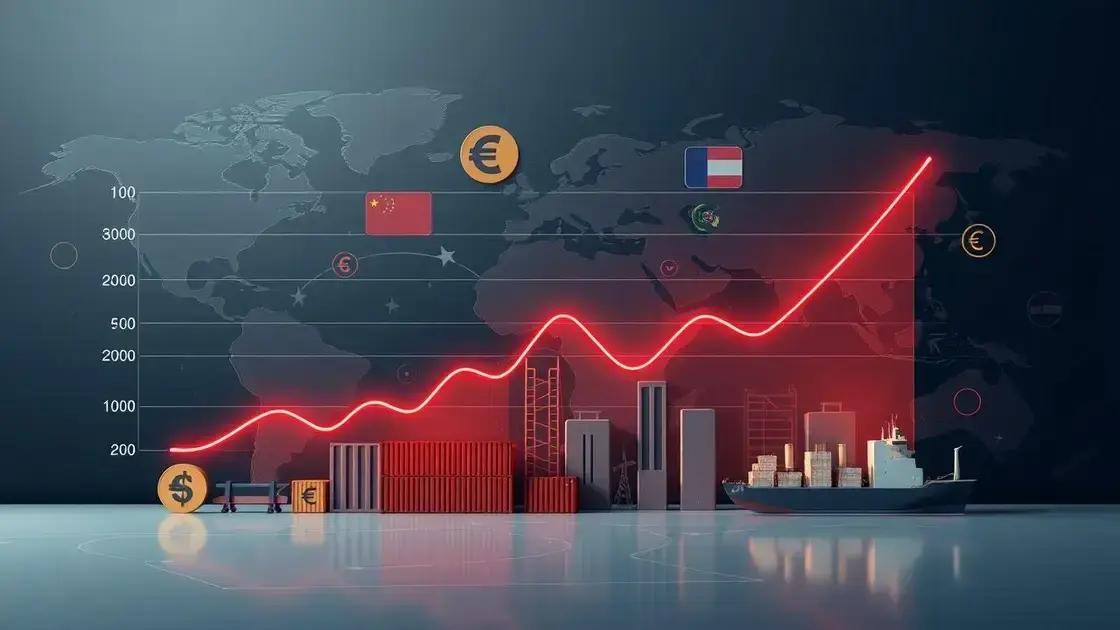
The future outlook on tariffs and economies remains uncertain, especially as countries navigate the balance between protecting domestic industries and promoting free trade. Understanding potential trends can help individuals and businesses prepare for changes in the economic landscape.
One emerging trend is the shift towards more selective tariffs. Rather than broad tariffs, governments may impose targeted tariffs on specific sectors that are struggling. This approach aims to minimize disruptions to the wider economy.
Key Considerations for the Future
- International Cooperation: Countries might prioritize diplomacy and cooperation to address trade imbalances, reducing the necessity of tariffs.
- Technological Innovations: Advancements in technology can alter supply chains, making it easier to source materials from various global locations without heavy tariffs.
- Consumer Preferences: As consumers become more aware of pricing and sourcing, their preferences can influence manufacturers to adapt, potentially leading to a shift in tariff policies.
- Political Landscapes: Changes in political climates within countries can lead to significant shifts in trade policies, including tariffs.
Furthermore, economic studies suggest that long-term reliance on tariffs can stifle innovation. Businesses adapting to high tariffs may find themselves less competitive globally, leading to deterioration in overall economic growth.
Emerging economies also play a vital role in the global trade picture. As these countries grow, their influence on international trade relations and tariffs will likely increase, complicating existing dynamics.
Ultimately, while tariffs may be a tool for economic protection, their long-term effects can provoke shifts that require careful consideration from policymakers and businesses alike.
FAQ – Frequently Asked Questions about Tariff-Induced Recessions
What is a tariff-induced recession?
A tariff-induced recession occurs when increased tariffs lead to a decline in economic activity, impacting trade, employment, and consumer spending.
How do tariffs affect global trade relations?
Tariffs can strain relationships between countries, leading to retaliatory measures and trade wars that disrupt the flow of goods and services.
What strategies can individuals use during a recession?
Individuals can manage expenses, build emergency funds, enhance skills, and diversify income to better navigate economic downturns.
What are the future prospects for tariffs and economies?
The outlook on tariffs suggests a potential trend toward targeted tariffs and greater international cooperation, though uncertainty remains.

